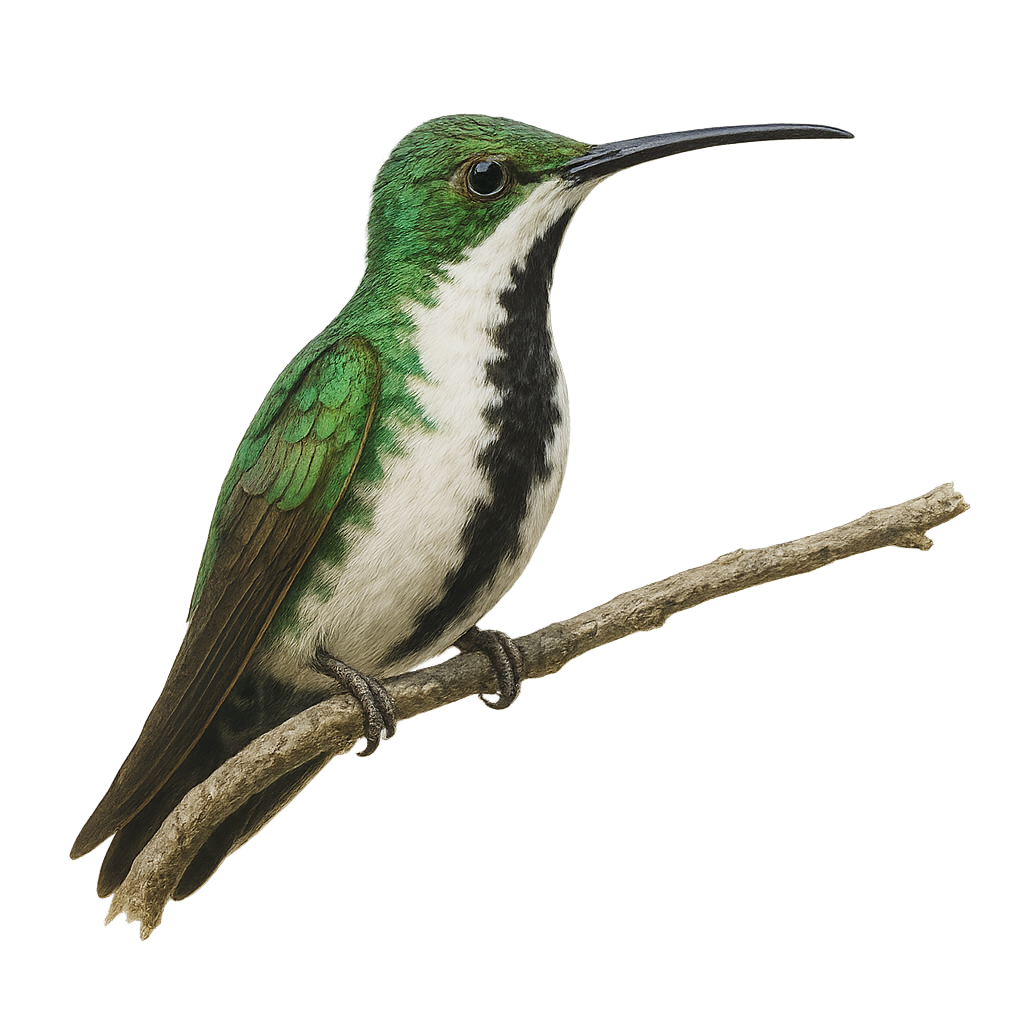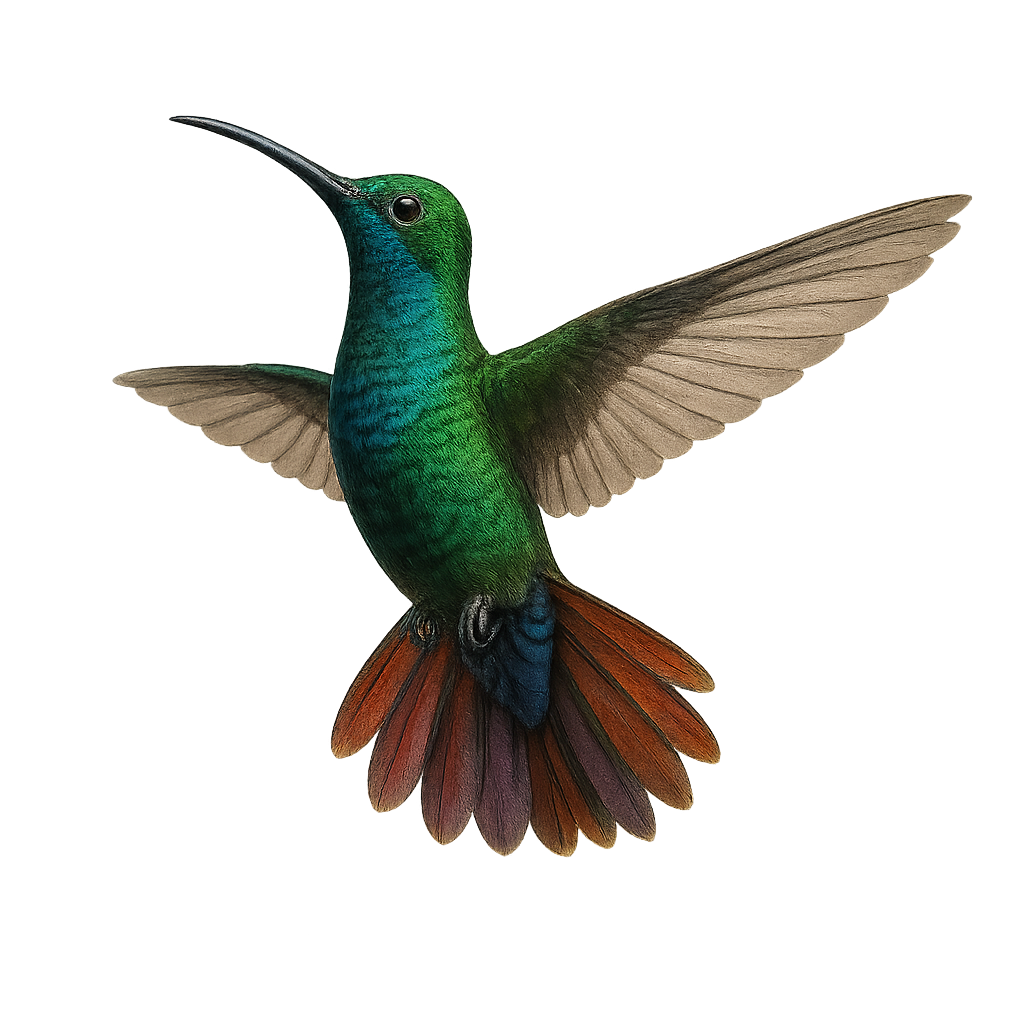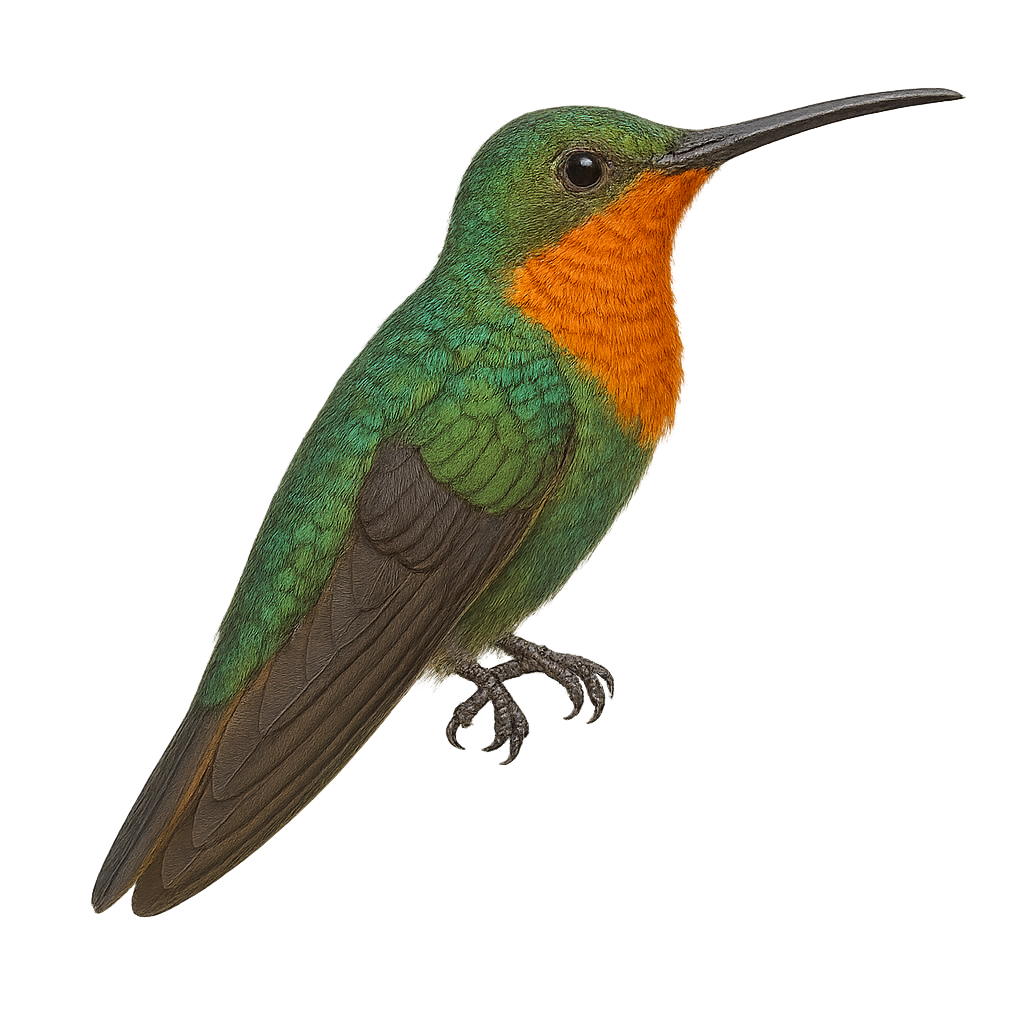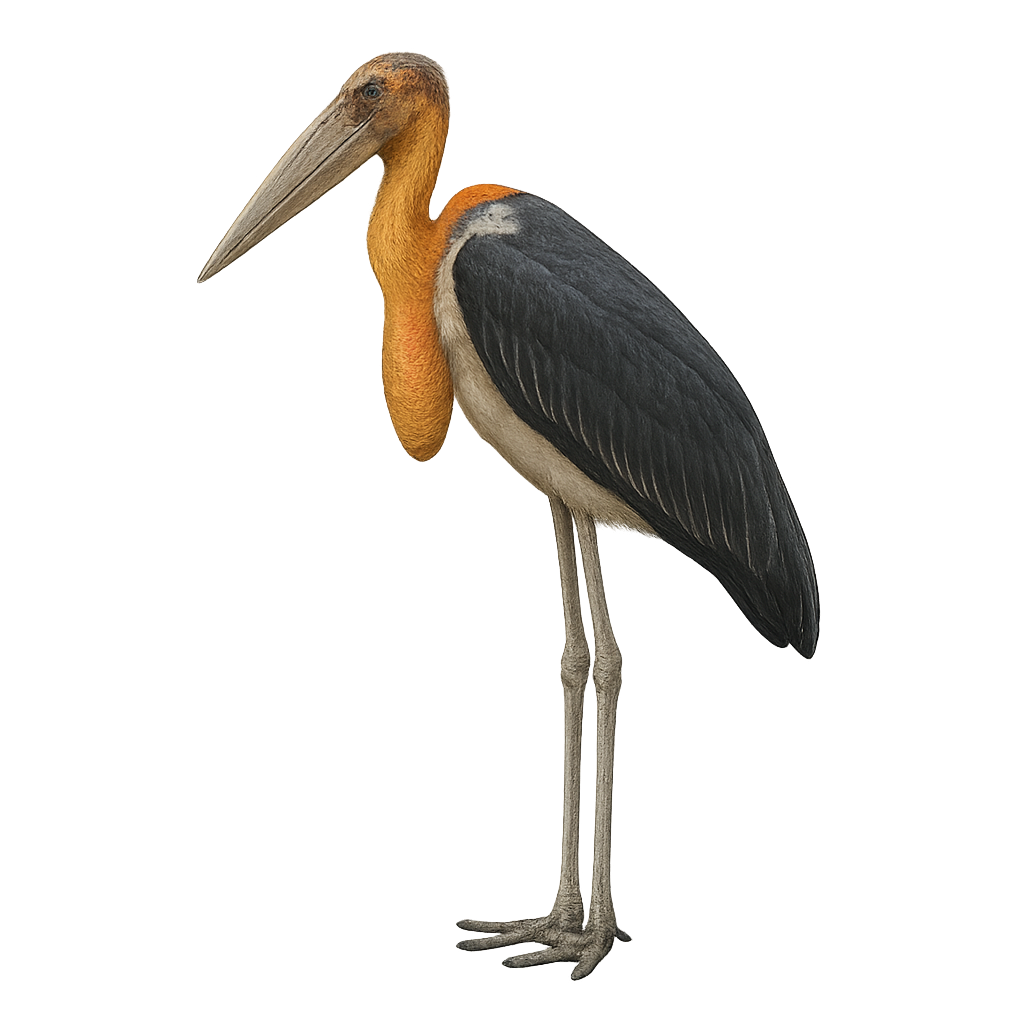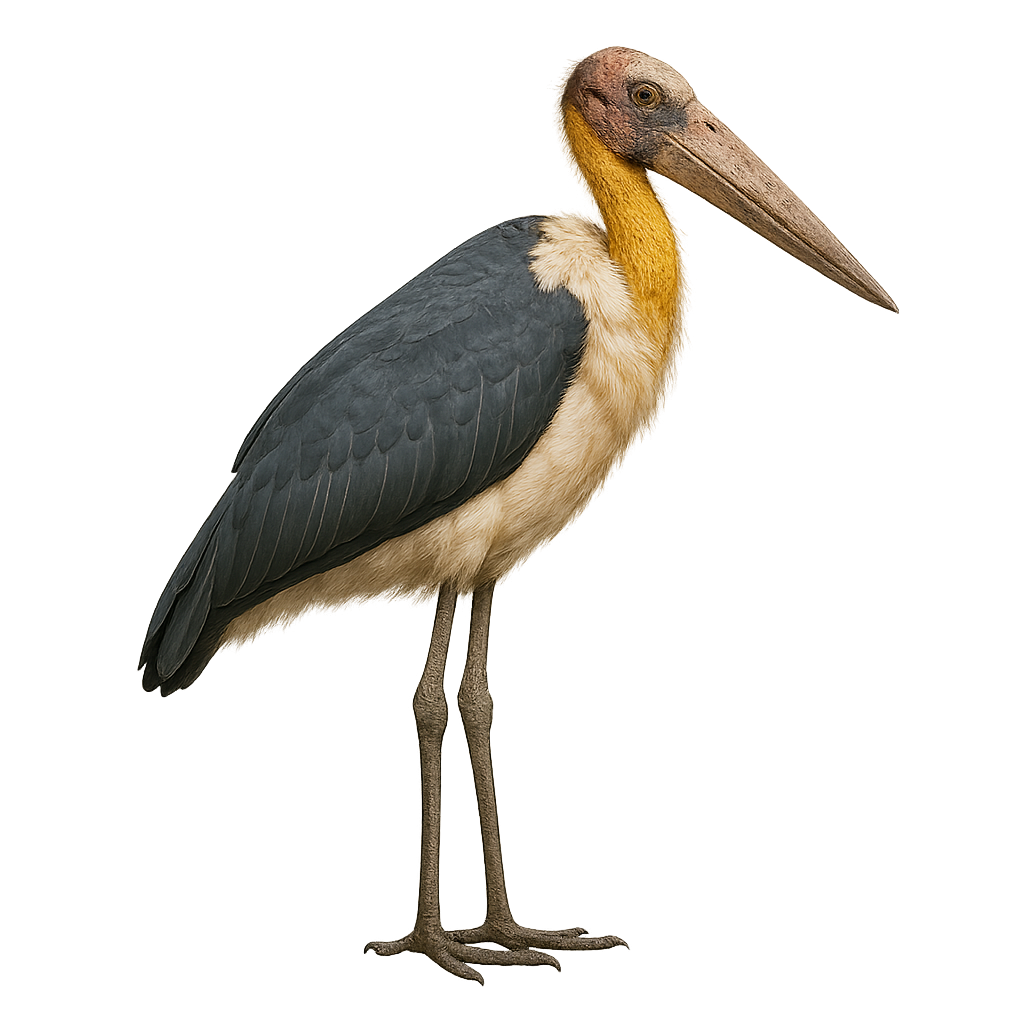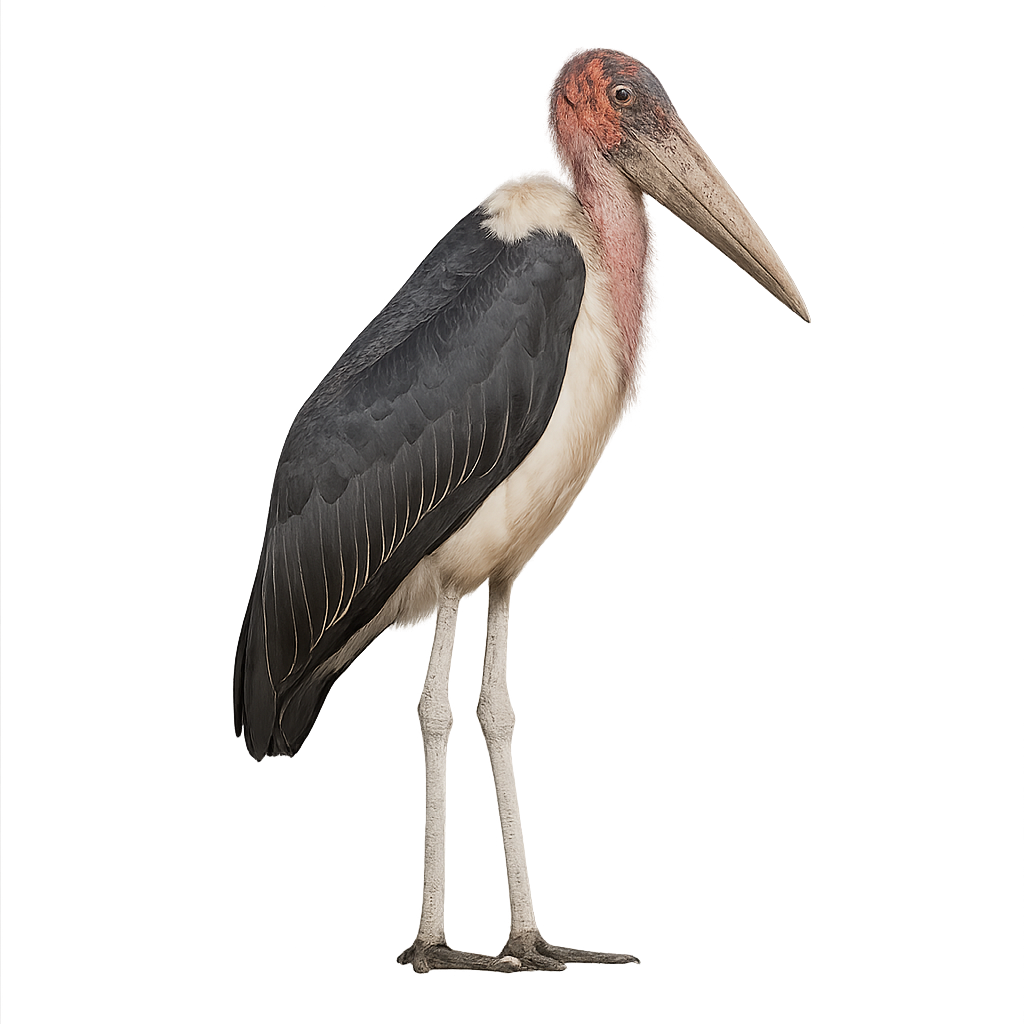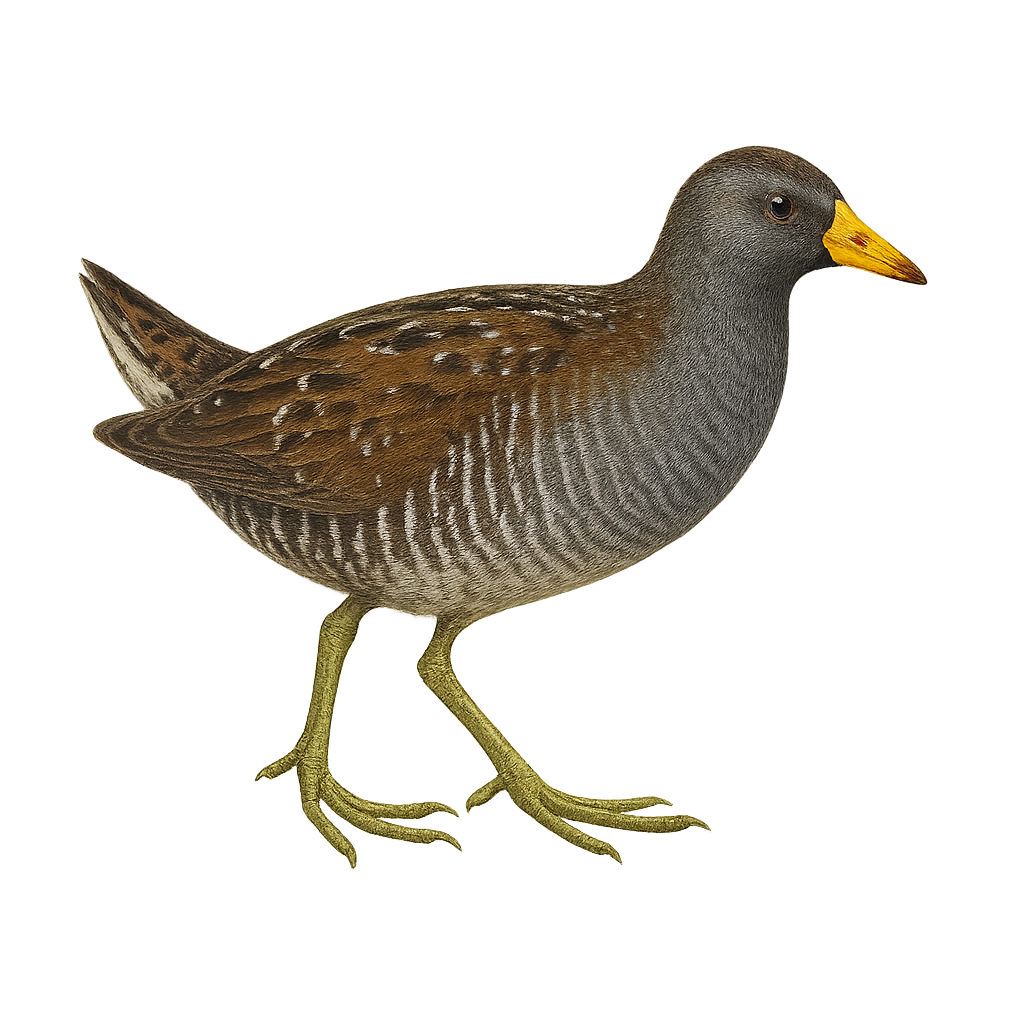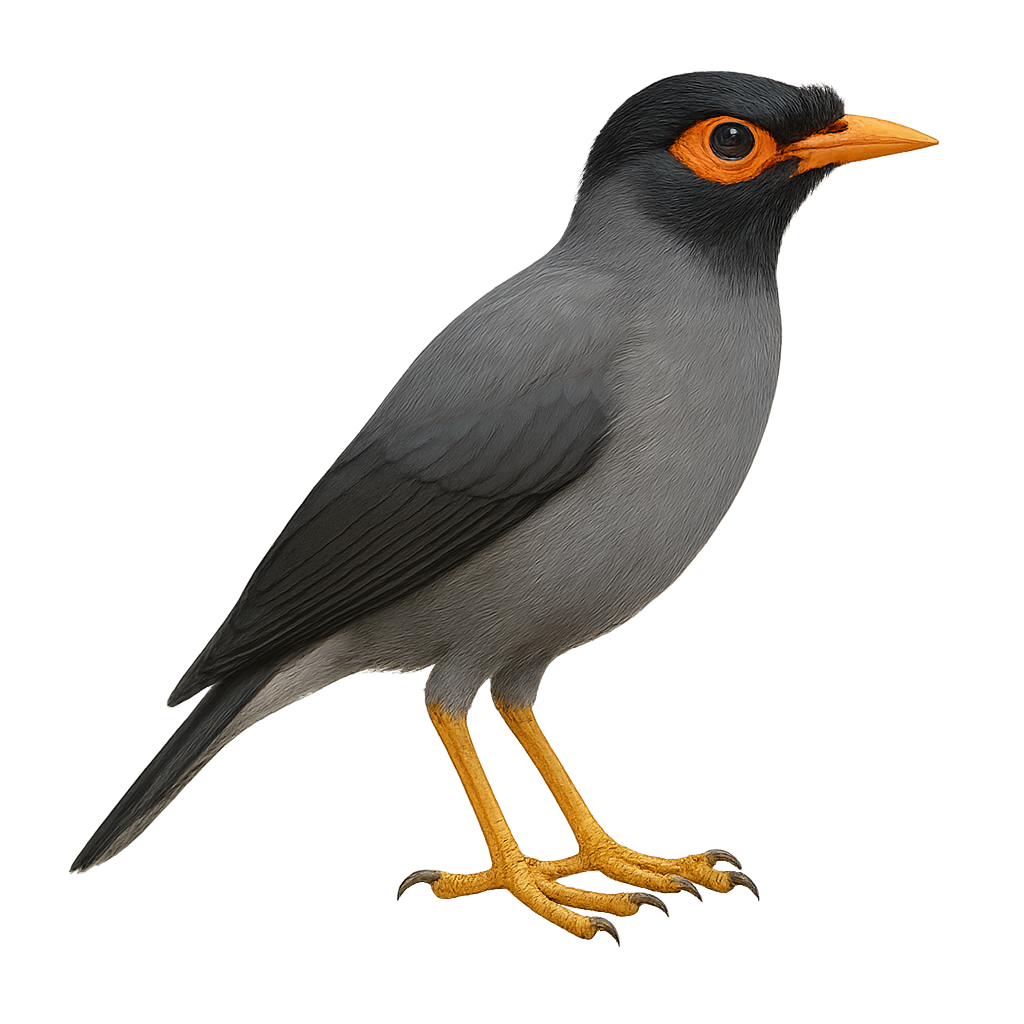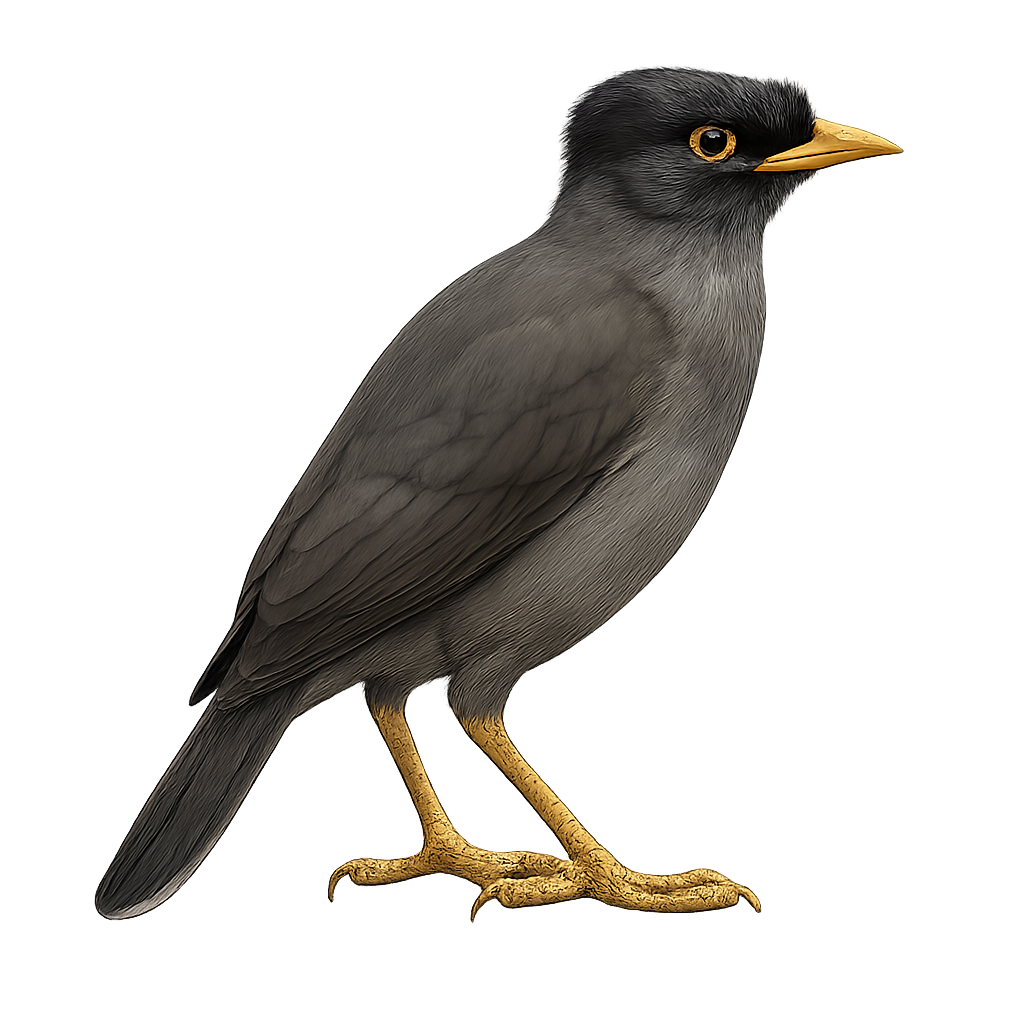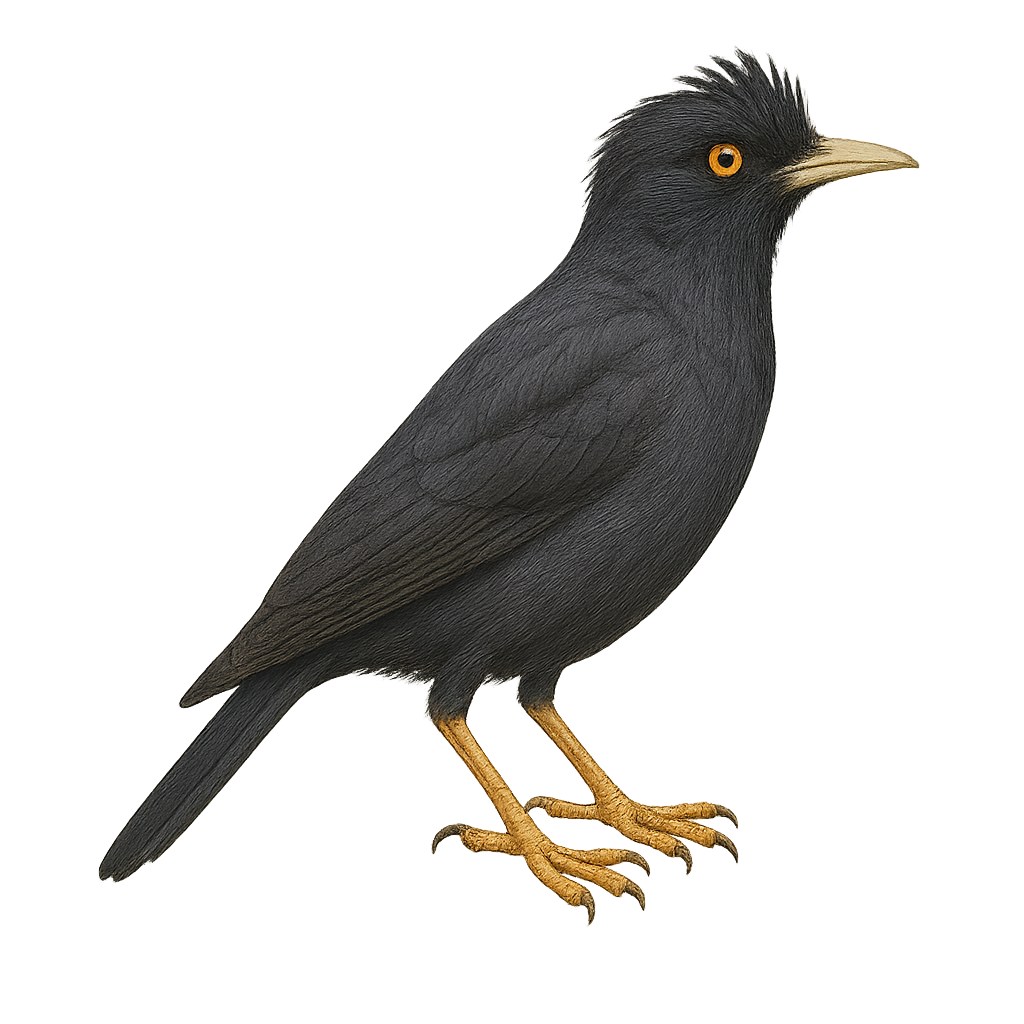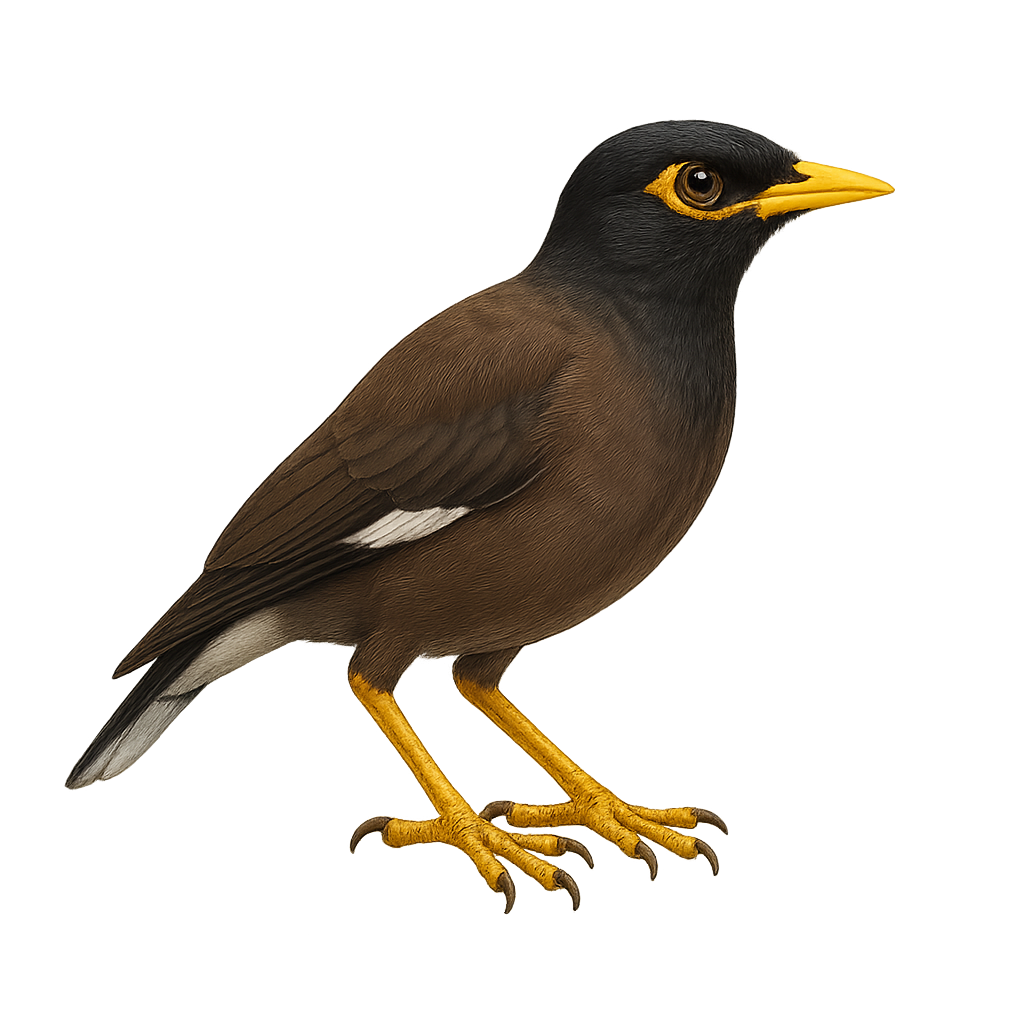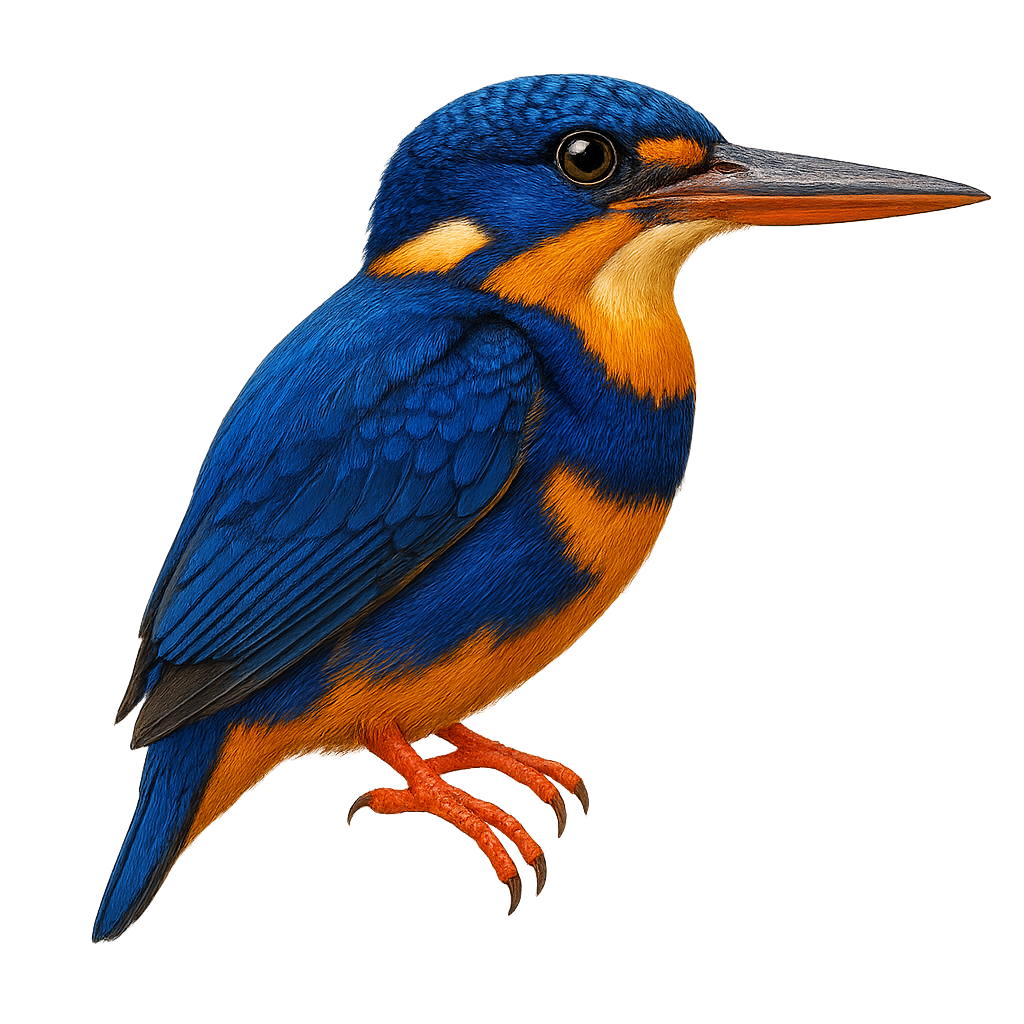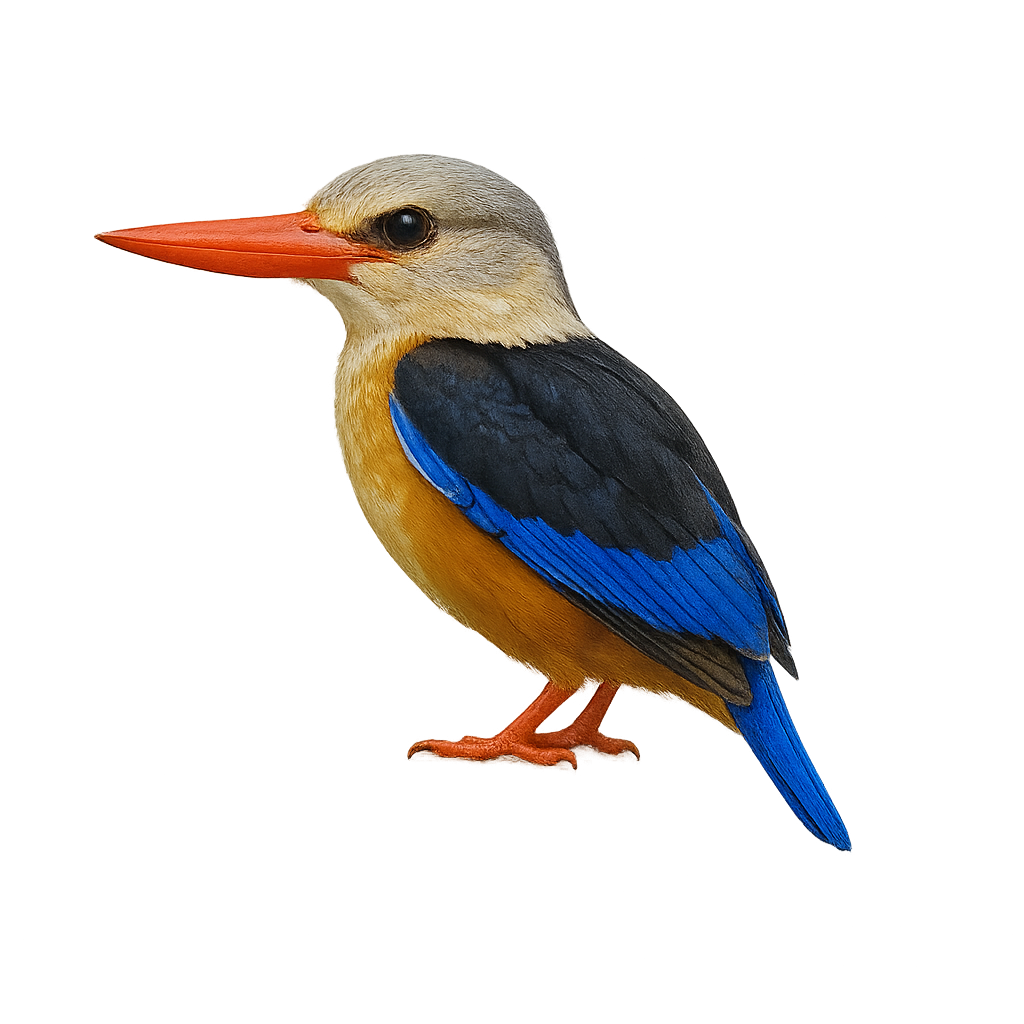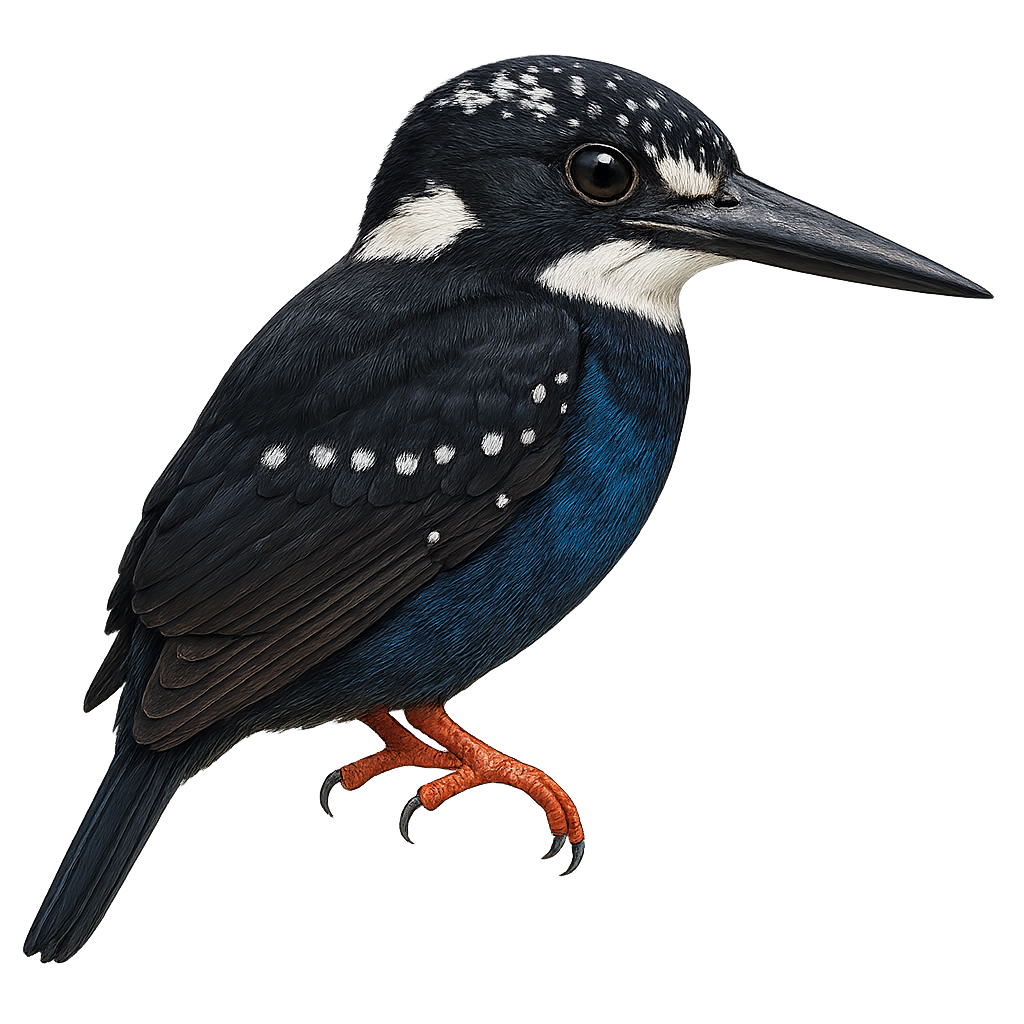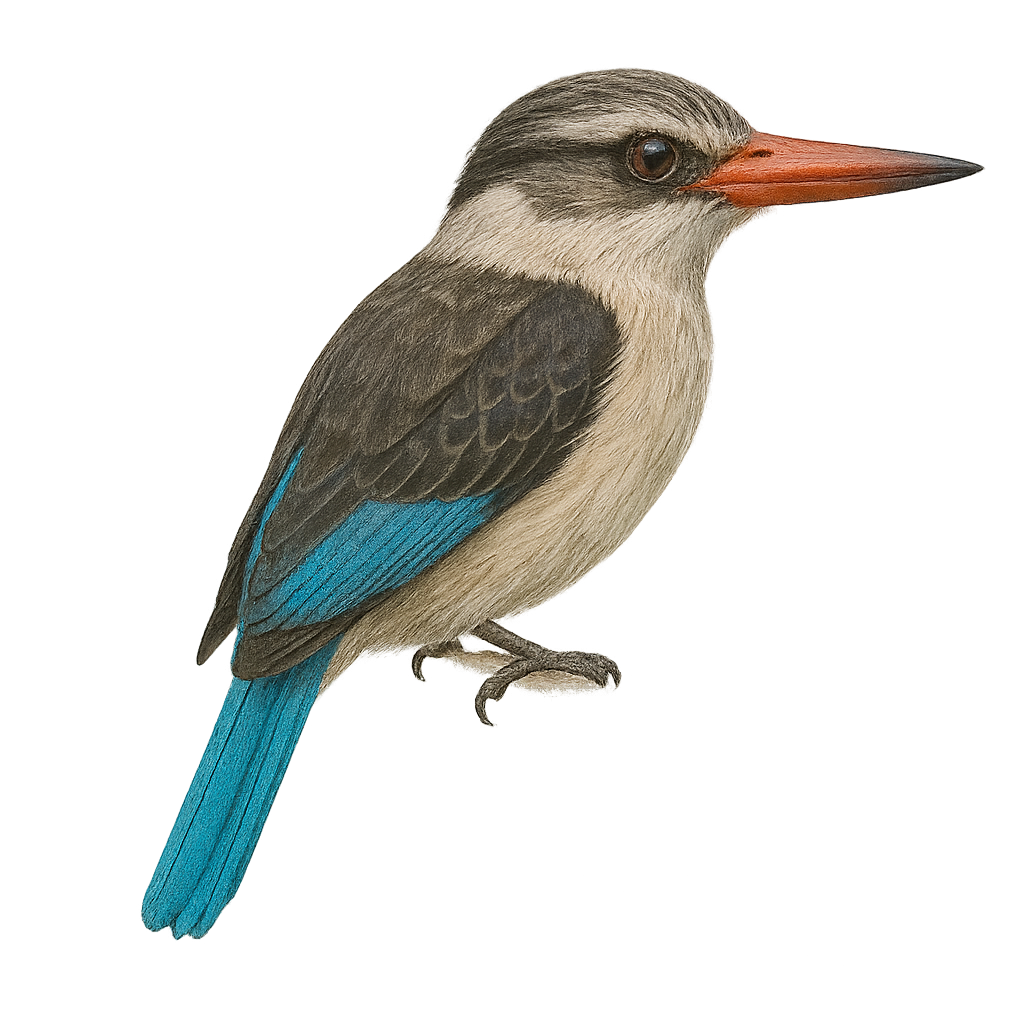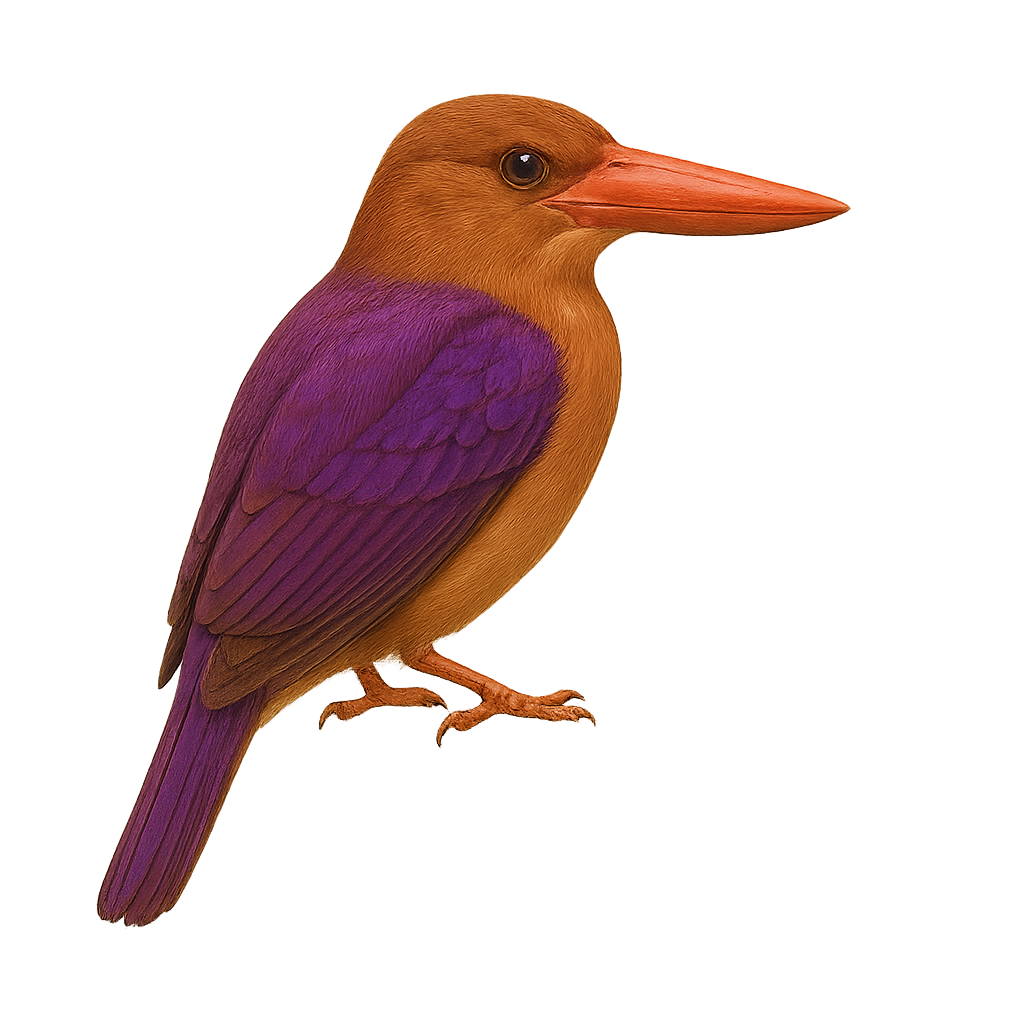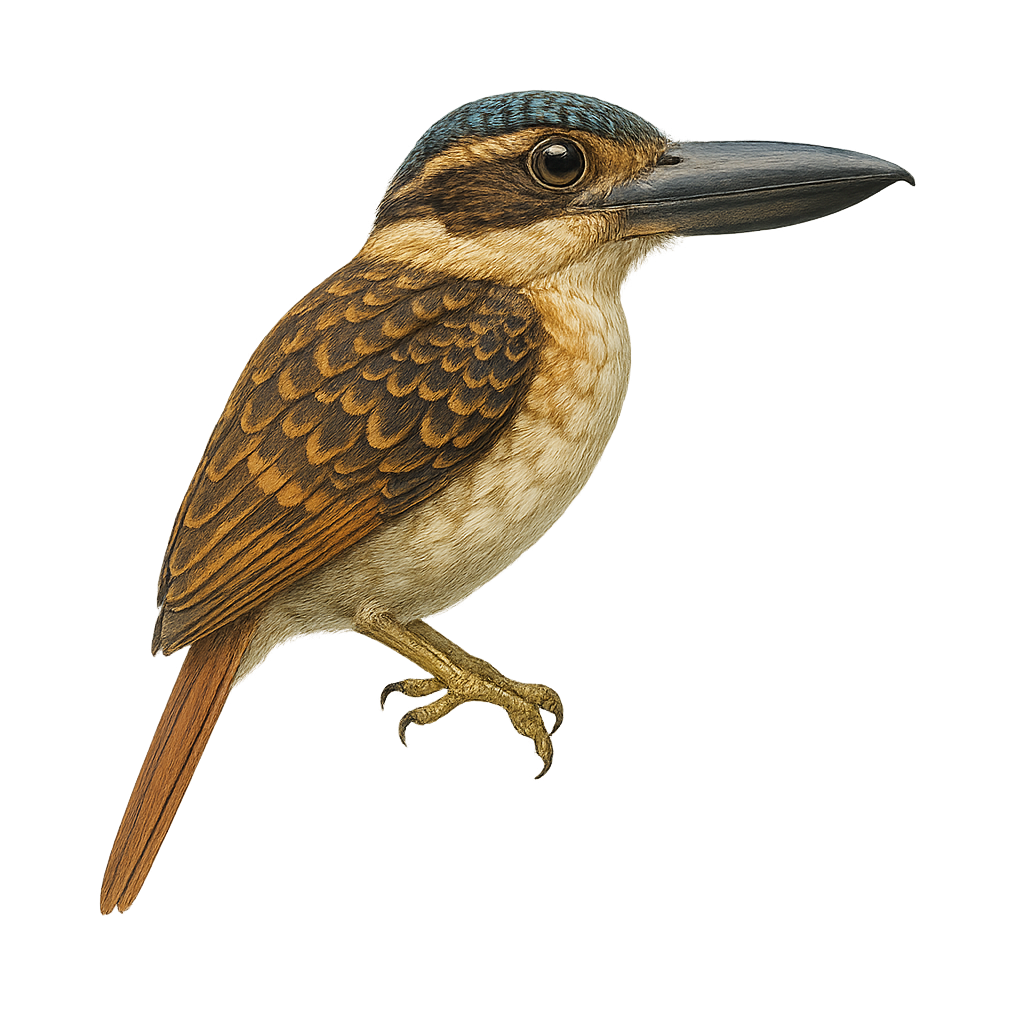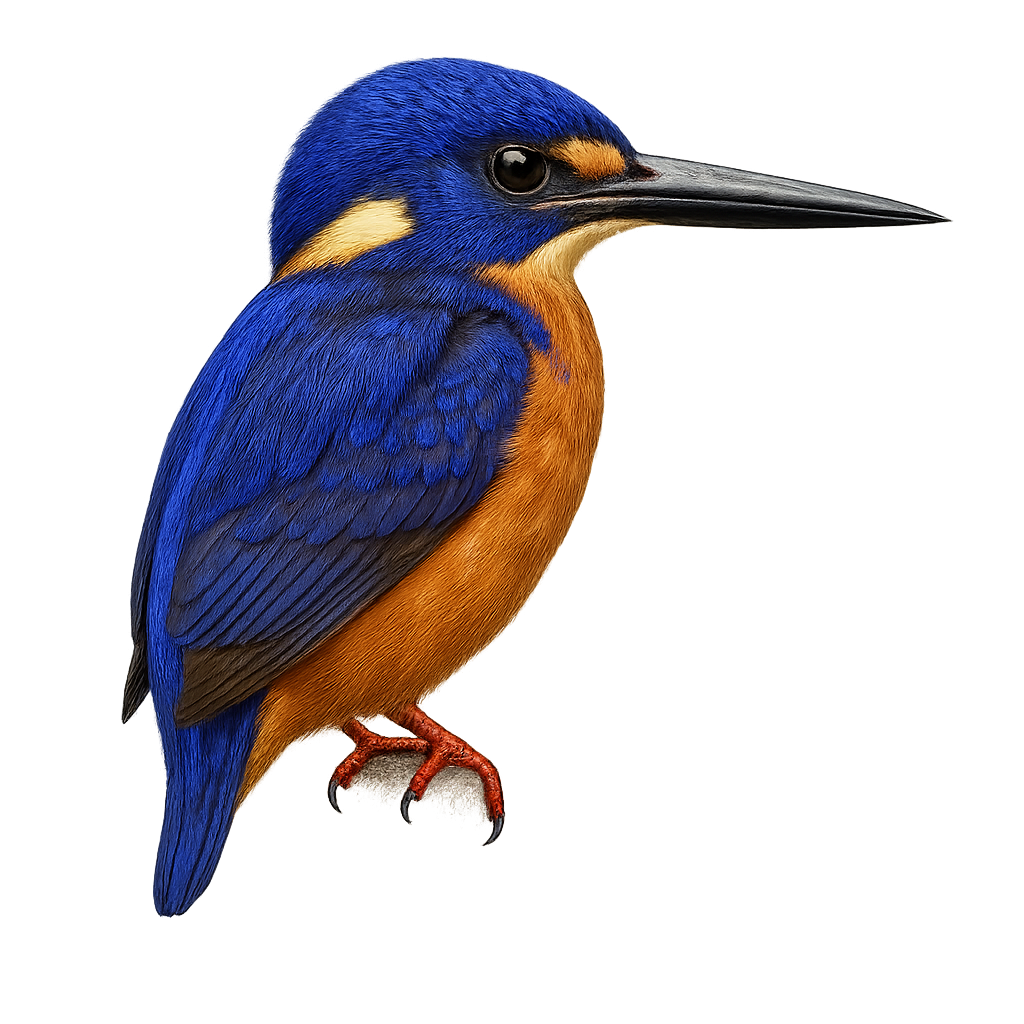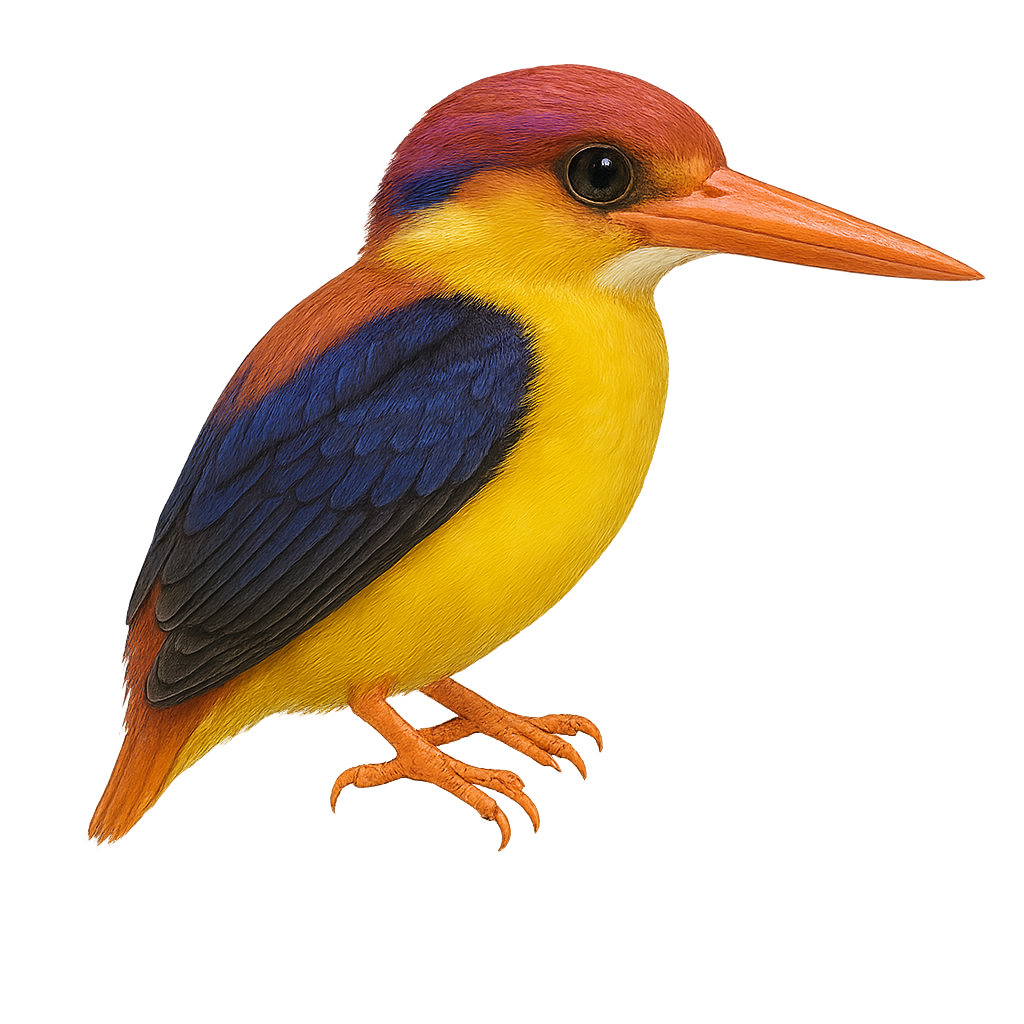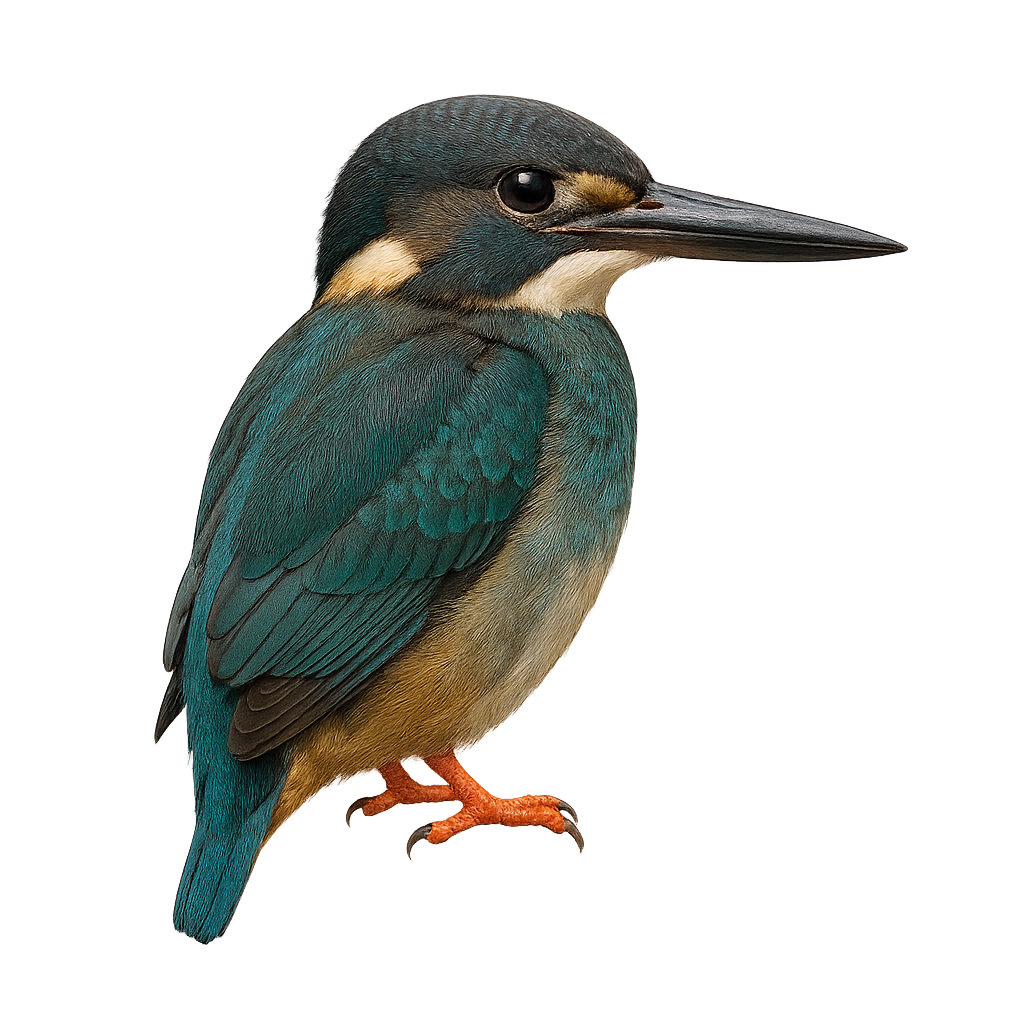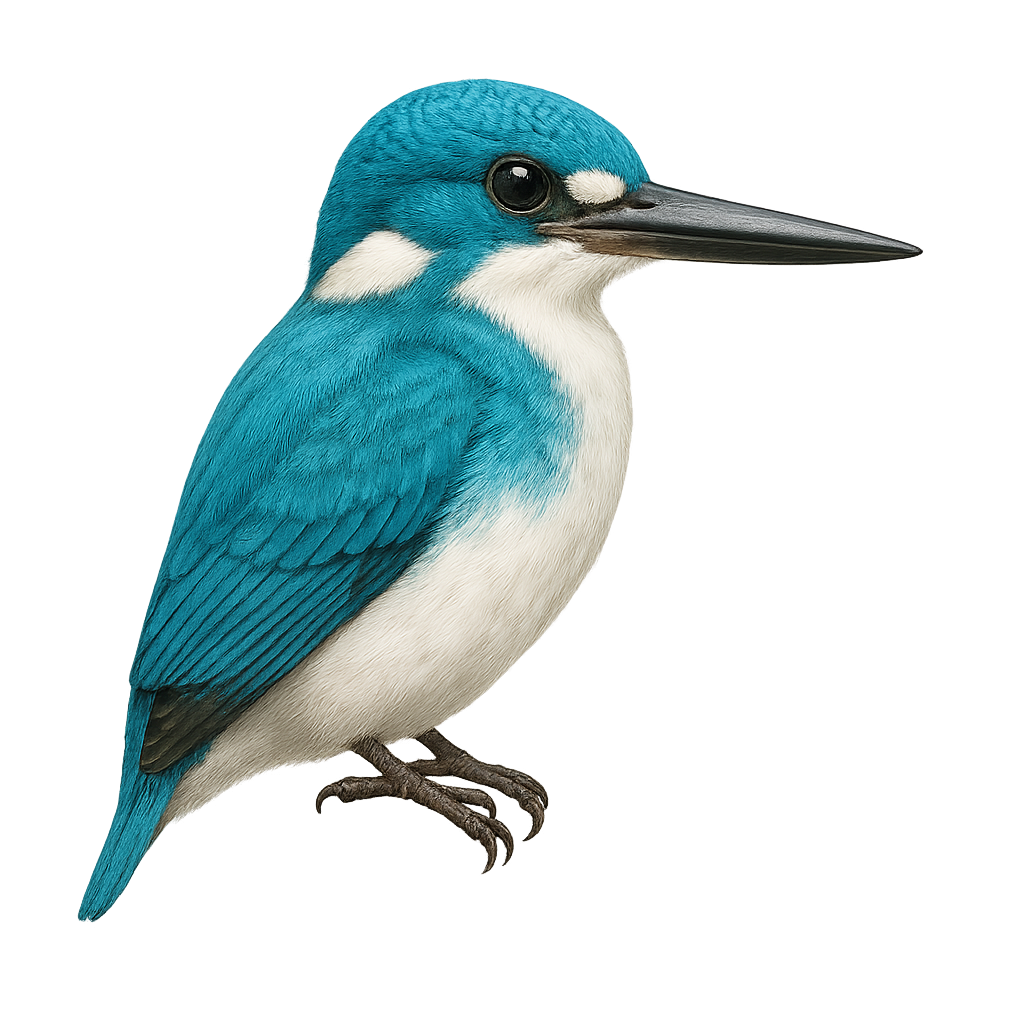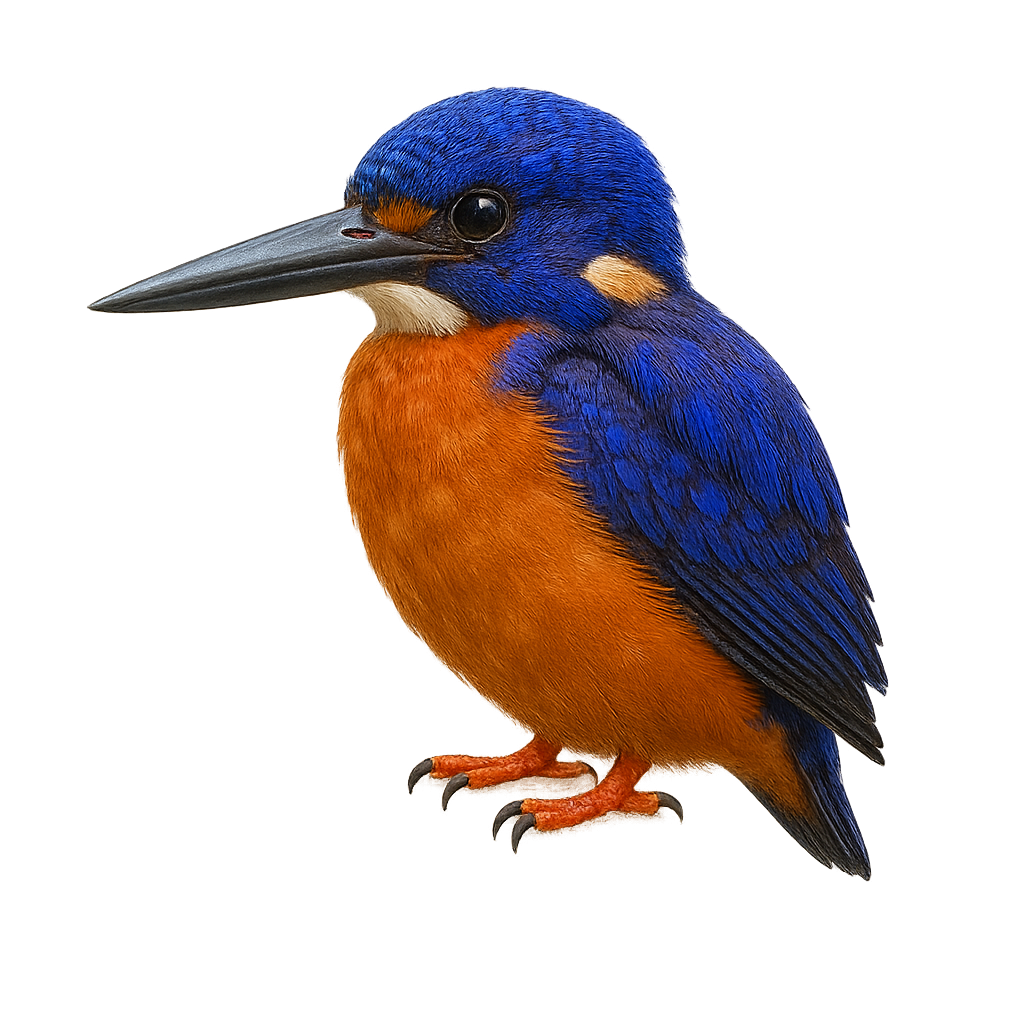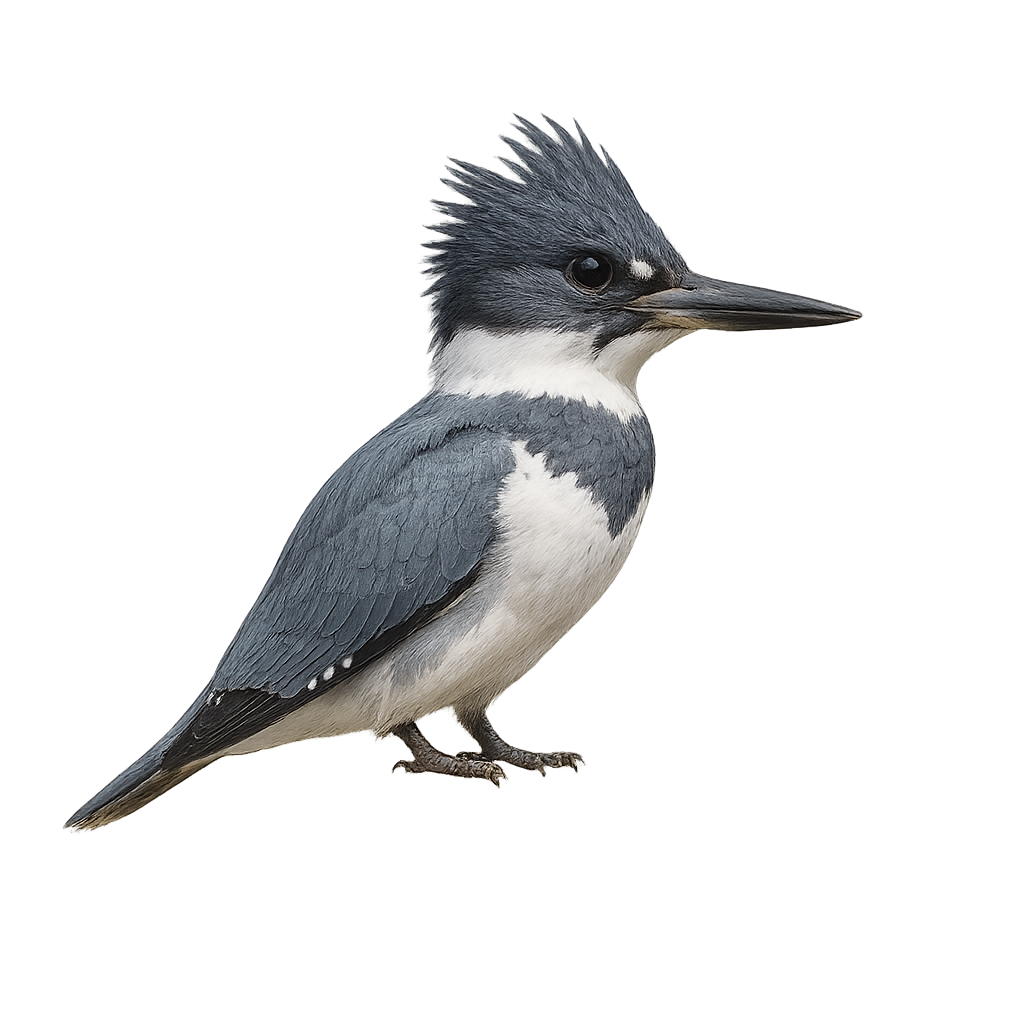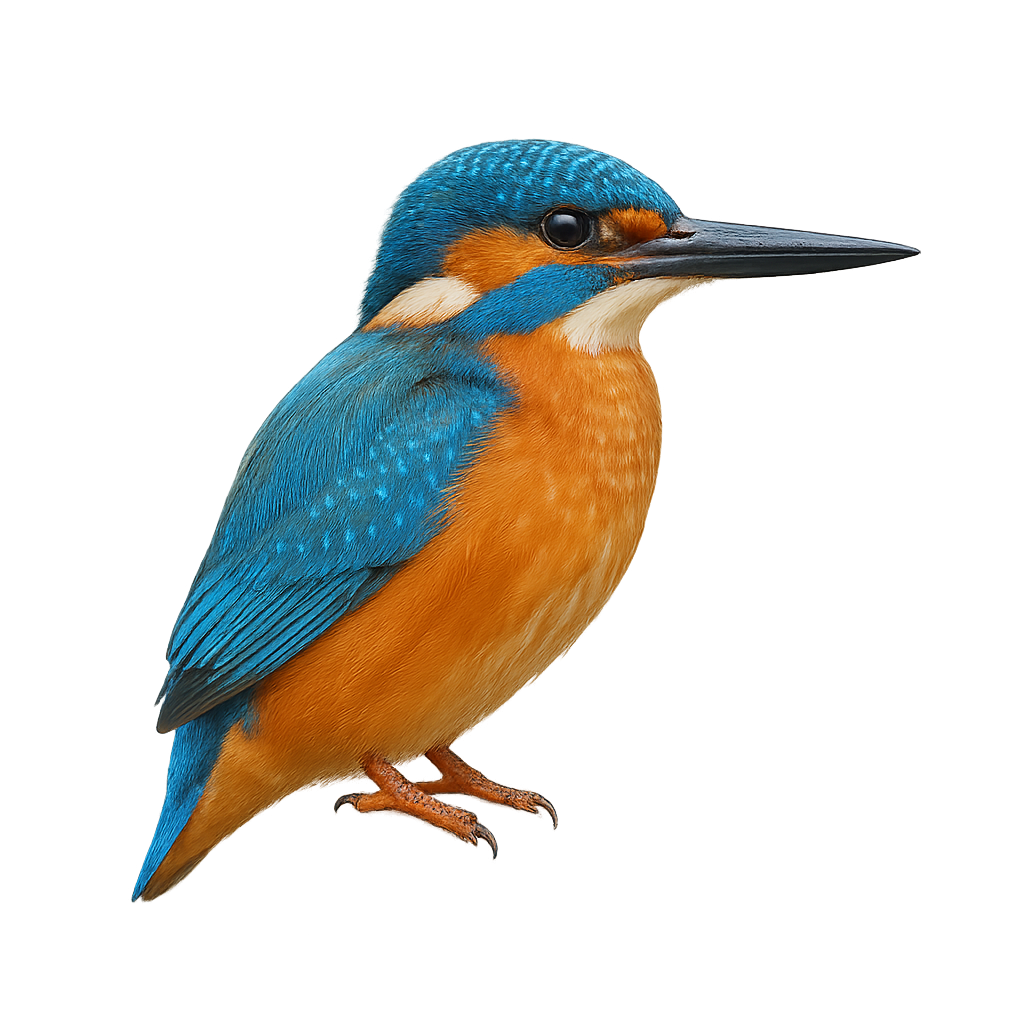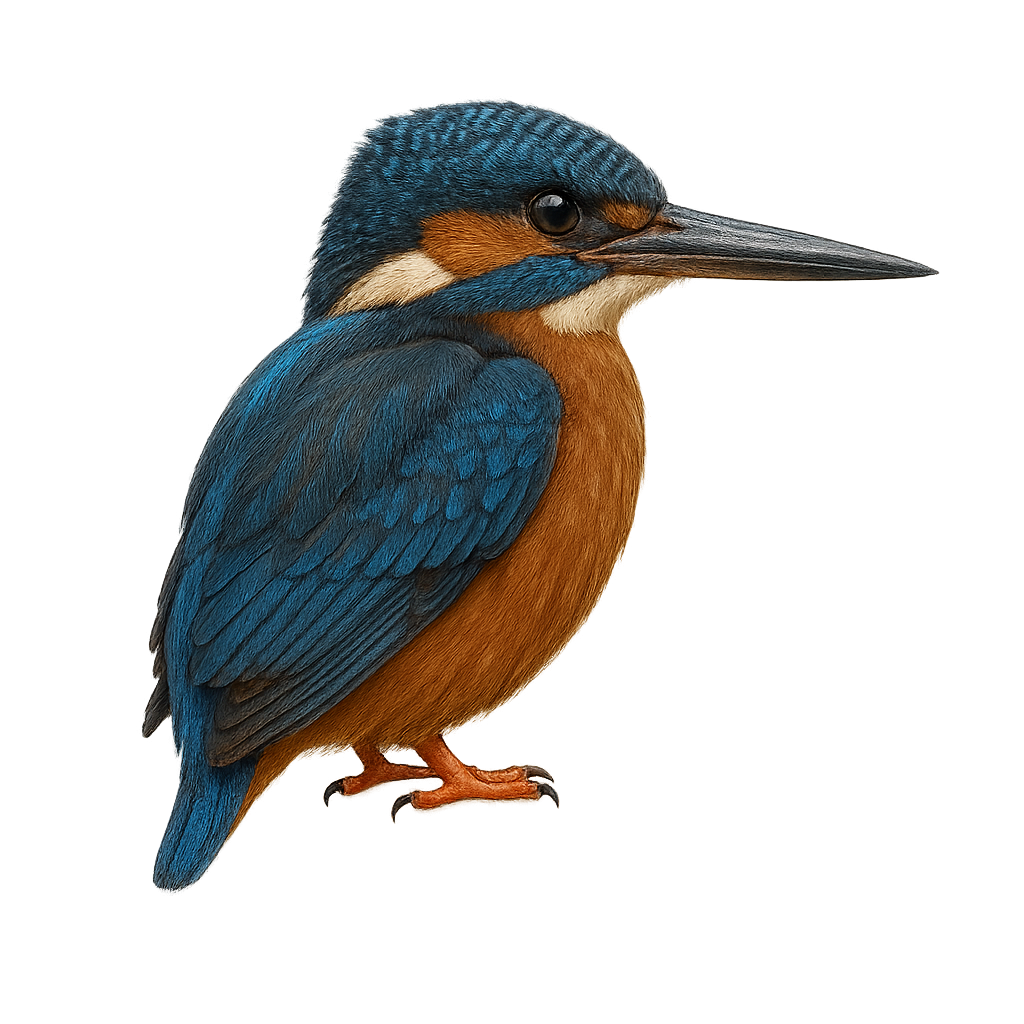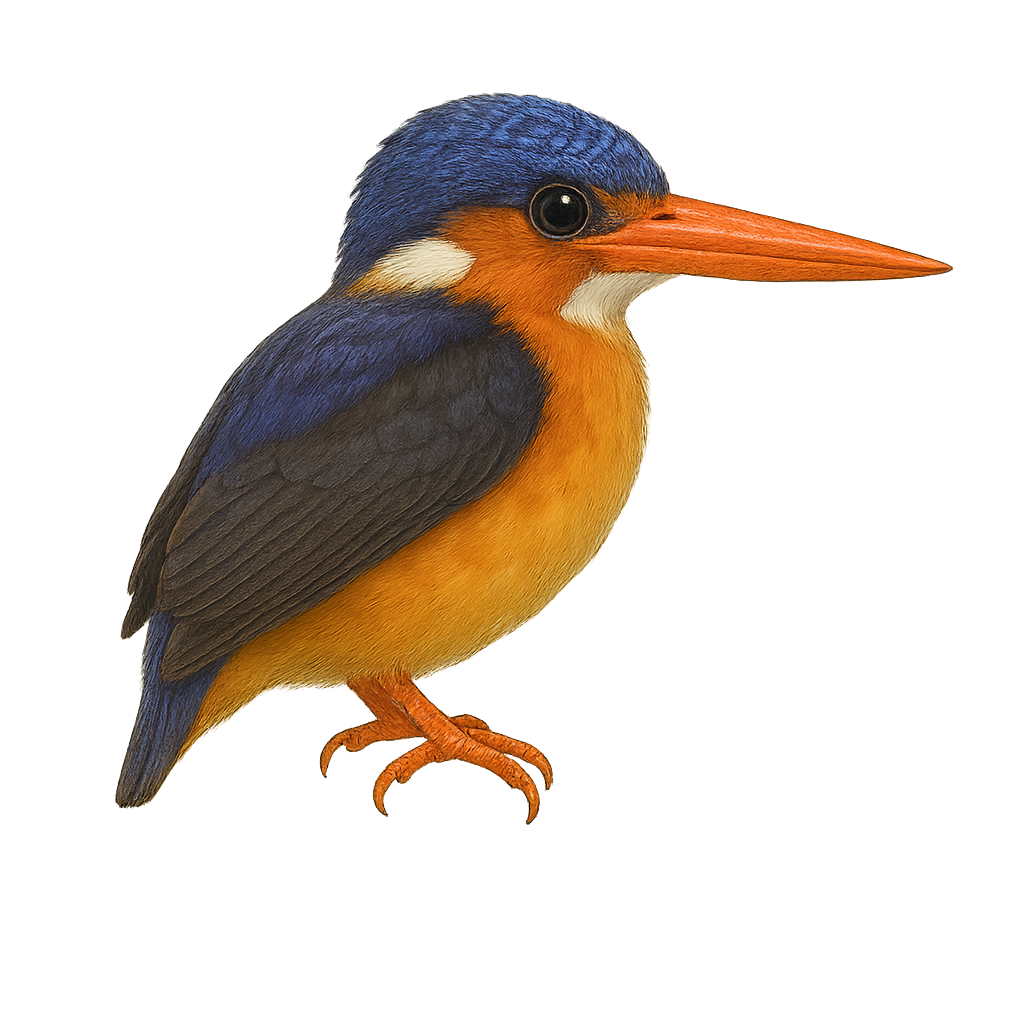The Black-throated Mango is a medium-sized hummingbird, easily recognizable by its black throat and metallic green plumage. Males have a distinctive black stripe running from the throat to the abdomen, while females feature a central white stripe bordered by black. It is primarily found in South America, inhabiting a range of environments from tropical forests to urban gardens. This hummingbird is an important pollinator, feeding mainly on nectar, but also consumes small insects to supplement its diet. Its rapid flight and agile movements make it a fascinating sight to behold.
The Green-throated Mango is a medium-sized hummingbird known for its iridescent emerald green throat and metallic plumage. It primarily inhabits tropical rainforests, mangroves, and open wooded areas in South America, particularly in Guyana, Brazil, and Venezuela. This hummingbird is often seen hovering around flowers to feed on nectar, playing a crucial role in pollination. It can also catch small insects in flight to supplement its diet. Although its habitat is threatened by deforestation, it remains relatively common within its range.
The White-tailed Sabrewing is a medium-sized hummingbird known for its emerald green plumage and distinctive white tail. It primarily inhabits the tropical rainforests of Central America, from southern Mexico to Panama. This hummingbird is a crucial pollinator, feeding on flower nectar with its long, curved bill. It is often seen hovering, beating its wings at an impressive speed. Although generally solitary, it can be observed in small groups during the breeding season. Its song is a mix of high-pitched chirps and trills.
The Hispaniolan Mango, or Anthracothorax dominicus, is a captivating bird primarily found on the island of Hispaniola, shared by Haiti and the Dominican Republic. This hummingbird is recognizable by its vibrant plumage, featuring metallic green and blue hues. Males often display an iridescent throat, while females are slightly duller. They primarily feed on nectar but also consume small insects to supplement their diet. These birds are often seen in gardens, tropical forests, and wooded areas, where they play a crucial role in plant pollination. Their fast and agile flight is a spectacle to behold, especially when they defend their territory against other hummingbirds.
The Greater Adjutant, or Leptoptilos dubius, is a large wading bird from the Ciconiidae family, primarily found in South and Southeast Asia, especially in India and Cambodia. This bird is notable for its impressive size, reaching up to 1.5 meters in height, with a wingspan that can exceed 2.5 meters. Its plumage is mainly gray with white highlights, and it has a bare, often reddish head and neck. The Greater Adjutant is a scavenger, feeding mainly on carcasses, but it can also consume fish and small animals. It plays a crucial ecological role by cleaning ecosystems of decomposing organic matter.
The lesser adjutant (Leptoptilos javanicus) is a large stork standing 110–120 cm tall with a 210 cm wingspan, exhibiting black upperparts and wings contrasted by a white belly and tail-underparts, and a bare pale gray head and neck. It inhabits coastal and inland wetlands of Southeast Asia, including mangroves, estuaries, flooded rice fields, and riparian forests. Feeding on amphibians, large invertebrates, and carrion, it forages by wading and probing with its long bill. Colonial breeder, it performs bill-clattering and neck-arching displays during nesting (February 1–May 31). Pairs lay 2–4 eggs, incubated 28–30 days, with chicks hatching March 1–June 30.
The African marabou is a large wading bird native to sub-Saharan Africa, easily recognized by its bare head, long neck, and mostly white plumage with black shades. It primarily lives in open areas near bodies of water, where it feeds on fish, dead animals, and waste. While it is not threatened, it is often associated with urban environments and can be seen in dumps. It is a solitary bird with a rather slow and discreet approach.
The Sora, or Porzana carolina, is a small waterbird belonging to the Rallidae family. It is easily identifiable by its olive-brown plumage with white stripes on the flanks and a bright yellow bill. This bird primarily inhabits marshes and wetlands in North America, where it feeds on seeds, insects, and small invertebrates. A migratory species, it winters in the warmer regions of the southern United States and Central America. The Sora is a secretive bird, often heard rather than seen, thanks to its distinctive call. Its ability to slip through dense vegetation makes it difficult to spot.
The Bank Myna, or Acridotheres ginginianus, is a medium-sized bird belonging to the Sturnidae family. It is primarily found in the Indian subcontinent, where it frequents open areas, cultivated fields, and villages. Its plumage is generally gray with metallic sheen, and it features black patches on its head and wings. This bird is known for its sociability and adaptability to various environments, making it common in human-inhabited areas. The Bank Myna primarily feeds on insects, fruits, and seeds. It is often observed in groups, which helps it protect against predators.
The Jungle Myna, or Acridotheres fuscus, is a medium-sized bird belonging to the Sturnidae family. Native to South Asia, it is often seen in forests, agricultural areas, and urban environments. This bird is characterized by its dark plumage, bright eyes, and yellow beak. Sociable and adaptable, the Jungle Myna is often seen in groups, foraging on the ground or in trees. It primarily feeds on insects, fruits, and seeds. Its song is varied and melodious, making it a favorite among birdwatchers. Although generally not very shy, it can be suspicious in areas where it is less accustomed to human presence.
The Crested Myna, or Acridotheres cristatellus, is a medium-sized bird, about 25 cm long. It is characterized by its glossy black plumage, striking yellow eyes, and a distinctive crest on its head. Native to Asia, it is often found in urban and rural areas, easily adapting to human-altered environments. An omnivore, it feeds on insects, fruits, and seeds. Its song is varied, including whistles and imitations of other birds. The Crested Myna is a social bird, often seen in small groups. Although primarily sedentary, it may make short movements to find food.
The Common Myna, or Acridotheres tristis, is a medium-sized bird easily recognized by its brown body, black head, and white wing patches. Native to South Asia, it has spread to many parts of the world, sometimes becoming invasive. This bird is highly adaptable, thriving in both urban and rural environments. It is omnivorous, feeding on fruits, insects, and food scraps. The Common Myna is known for its intelligence and ability to mimic sounds, including human speech. It forms monogamous pairs and is often seen in noisy groups.
The Indigo-banded Kingfisher, Ceyx cyanopectus, is a fascinating bird found in the humid tropical forests of the Philippines. It is distinguished by its striking plumage, with a bright blue head and back, contrasting with a white chest and black wings. Measuring about 16 cm, it is known for its robust beak and short legs. This kingfisher is an agile predator, primarily feeding on small fish and insects, which it captures by diving with precision. Although often solitary, it can be observed in pairs during the breeding season. Its presence is an indicator of the health of the aquatic ecosystems it inhabits.
The Grey-headed Kingfisher is a medium-sized bird, easily recognized by its grey head and colorful plumage. It measures about 25 cm in length and weighs between 50 and 70 g. Its back is typically metallic blue, with a contrasting white belly, and its wings are bright blue with touches of green and orange. This kingfisher is distinguished by its wide, straight bill, suited for hunting. It primarily lives in wooded areas and along the shores of rivers and lakes, where it feeds mainly on fish, aquatic insects, and small amphibians. The Grey-headed Kingfisher hunts by diving from a perch or electrical wire, capturing its prey with great precision. These birds are solitary, although some form pairs during the breeding season. It is widely distributed in Southeast Asia, particularly in India, Bangladesh, and Myanmar. While its population remains relatively stable, the Grey-headed Kingfisher can be threatened by habitat destruction, water pollution, and poaching.
The Southern Silvery Kingfisher, Ceyx argentatus, is a small bird endemic to the Philippines. It is distinguished by its striking plumage, with a metallic blue back and silvery white belly. Its head is adorned with black and white markings, and it has a bright red bill. It primarily inhabits tropical rainforests, often near rivers and streams where it hunts small fish and aquatic insects. Although discreet, it is sometimes observed diving skillfully to catch its prey. Its population is threatened by deforestation and habitat degradation, making it a vulnerable species.
The Smyrna Kingfisher is a colorful, medium-sized bird found primarily in Southeast Asia and surrounding regions. It measures about 25 to 30 cm in length and weighs between 40 and 70 g. This kingfisher is distinguished by its brilliant plumage and vibrant colors: a metallic blue back, an orange-red head, and a white belly. Its bill is long, straight, and pointed, perfect for catching prey such as fish, aquatic insects, and small reptiles. The Smyrna Kingfisher typically lives near bodies of water like rivers, lakes, and marshes, where it can dive to catch its food. It is often observed alone or in pairs during the breeding season when it builds a nest in tree cavities or rocks. Although its population remains relatively stable in some areas, it faces threats such as habitat destruction and water pollution.
The Woodland Kingfisher, Halcyon senegalensis, is a colorful and fascinating bird widely distributed in sub-Saharan Africa. This medium-sized bird, measuring about 23 cm in length, is easily recognizable by its bright blue plumage, black wings, and white belly. Its robust, bright red bill is adapted to its varied diet, mainly consisting of insects, small reptiles, and occasionally fish. The Woodland Kingfisher prefers wooded habitats, savannas, and areas near water, where it can easily find its food. Although often solitary, it can be seen in pairs during the breeding season. Its distinctive call, a rapid and repetitive trill, is often heard at dawn and dusk.
The Striped Kingfisher, or Halcyon chelicuti, is a medium-sized bird, about 20 cm long. It is characterized by its brown plumage with white streaks on the belly and a head adorned with black and white bands. Its beak is robust and slightly hooked, perfect for catching prey. Found mainly in sub-Saharan Africa, it inhabits savannas, open forests, and wooded areas. It feeds primarily on insects, small reptiles, and occasionally fish. Although often solitary, it can be seen in pairs during the breeding season. Its song is a melodious trill, often heard at dawn and dusk.
The Ruddy Kingfisher, or Halcyon coromanda, is a medium-sized bird known for its striking purple plumage and robust red bill. It primarily inhabits the tropical and subtropical forests of Southeast Asia, where it feeds on small fish, insects, and crustaceans. This bird is often seen near water bodies, using its keen eyesight to spot prey. Although generally discreet, its melodious call can be heard at dawn and dusk. The Ruddy Kingfisher is a migratory bird, moving to warmer regions during winter months. Its population is stable, but it remains vulnerable to deforestation.
The Melidora macrorrhina, commonly known as the Hook-billed Kingfisher, is a fascinating bird native to the tropical forests of New Guinea. This kingfisher is distinguished by its unique, wide, and flattened bill, which allows it to effectively capture aquatic prey. It sports a vibrant plumage with shades of blue, green, and white, giving it an elegant appearance. This bird prefers dense, humid habitats where it can hide among the foliage while watching for prey. Although primarily solitary, it is sometimes observed in small family groups. Its discreet presence and suspicious behavior make it difficult to spot, but it is a true gem for birdwatchers and passionate photographers.
The Half-collared Kingfisher, Alcedo semitorquata, is a captivating bird found in the tropical regions of sub-Saharan Africa. It is notable for its vibrant blue plumage on the back and wings, contrasting with a white belly and a blue chest band. Its head features a dark blue crown, and its long black bill is perfect for catching fish, its primary food source. This kingfisher inhabits rivers, lakes, and wetlands, where it can be seen perched on branches overhanging the water, ready to dive for its prey. Though discreet, it is often detected by its sharp, piercing call.
The Azure Kingfisher, Ceyx azureus, is a small, brightly colored bird, predominantly vivid blue with orange hues on its belly. It primarily inhabits the waterways and rivers of Australia and New Guinea. This kingfisher is known for its speed and agility when diving to catch fish, its main food source. It nests in burrows dug into riverbanks. Though discreet, it is often spotted thanks to its sharp, distinctive call. Its compact size and striking plumage make it a favorite subject for birdwatchers and wildlife photographers.
The Rufous-backed Dwarf Kingfisher, Ceyx rufidorsa, is a small, vibrantly colored bird found in the tropical forests of Southeast Asia. It is easily recognizable by its bright red back and wings tinged with shades of blue and purple. This kingfisher measures about 13 cm in length and weighs between 14 and 17 grams. It primarily inhabits dense forests near water bodies, where it hunts small fish, insects, and crustaceans. Its hunting technique is impressive, diving swiftly into the water to catch its prey. Although discreet, its high-pitched, repetitive call can be heard through the canopy.
The Javan Blue-banded Kingfisher is a medium-sized bird known for its striking plumage and distinctive blue band across its chest. It primarily inhabits tropical rainforests and slow-moving rivers in Southeast Asia. This kingfisher is an adept hunter, feeding mainly on small fish and aquatic insects. It is often seen perched on low branches, watching the water for prey. Although its habitat is threatened by deforestation, it remains relatively common in some protected areas.
The Cerulean Kingfisher, Alcedo coerulescens, is a small bird, approximately 16 cm in length. It is known for its striking plumage: a vivid blue back, orange belly, and a head adorned with blue and black bands. This kingfisher is primarily found in Indonesia, inhabiting tropical rainforests and mangroves. It feeds mainly on small fish and aquatic insects, which it catches with precise dives. Although discreet, its high-pitched, repetitive call can be heard near water bodies. Due to deforestation, its habitat is threatened, impacting its populations.
The Shining-blue Kingfisher, Alcedo quadribrachys, is a captivating bird found mainly in the humid tropical forests of West and Central Africa. This small bird, measuring about 16 cm in length, is distinguished by its striking plumage, with a bright blue head and back, contrasting with a white belly and dark wings. It is often seen near water bodies, where it hunts small fish and aquatic insects. Its fast, direct flight and high-pitched call make it easily recognizable. Though discreet, it plays a vital role in its ecosystem, helping regulate fish and insect populations.
The Belted Kingfisher is a medium-sized aquatic bird, easily recognized by its bright plumage and vivid colors. It measures about 28 cm in length and weighs between 100 and 150 g. Its back is a brilliant metallic blue, while its belly is white with orange patches on the chest. It has a long, straight, pointed bill, suited for catching fish and other aquatic prey. The Belted Kingfisher is an excellent diver, often perching on branches or electrical wires above the water before diving at high speed to catch its prey. It primarily lives in rivers, lakes, marshes, and coastal areas of North America, from southern Canada to Mexico. These birds are solitary and defend their territory by emitting sharp calls. While its population remains relatively stable, it is threatened by habitat loss due to water pollution and wetland destruction.
The European Kingfisher is a small aquatic bird, easily recognized by its vivid plumage and bright colors. It measures about 17 to 19 cm in length and weighs between 30 and 40 g. Its back is a brilliant metallic blue, while its belly is a bright orange. Its bill is long, straight, and pointed, perfectly suited for catching fish and aquatic insects. This kingfisher primarily lives along rivers, lakes, and canals in Europe, where it perches on branches or rocks near the water. When hunting, it dives quickly in a headfirst plunge to capture its prey, often using its excellent vision to locate fish underwater. The European Kingfisher is a solitary bird, defending its territory by emitting a sharp call. While it is relatively common in many parts of Europe, it can be threatened by water pollution and habitat destruction.
The Blyth's Kingfisher, or Alcedo hercules, is a remarkable bird primarily found in the mountainous regions of Southeast Asia. This kingfisher stands out due to its impressive size, reaching up to 25 cm in length, making it one of the largest in its genus. Its plumage is a striking blue on the back and wings, contrasting with an orange belly. It frequents fast-flowing streams and rivers bordered by dense forests, where it primarily hunts fish and aquatic insects. Its presence is often revealed by its sharp, piercing call. Although discreet, it is sometimes observed perched on a branch overlooking the water, patiently waiting for its prey.
The Dimorphic Dwarf Kingfisher, or Ceyx margarethae, is a small, brightly colored bird endemic to the island of Sulawesi in Indonesia. This kingfisher is distinguished by its vibrant plumage, featuring shades of blue, orange, and white. It primarily inhabits tropical rainforests and wooded areas near water bodies. Although discreet, it is often spotted due to its sharp and distinctive call. This kingfisher feeds mainly on small fish and insects, which it catches by swiftly diving into the water from a perch. Its small size and discreet behavior make it difficult to observe, but it is a true gem for birdwatchers and nature enthusiasts.


